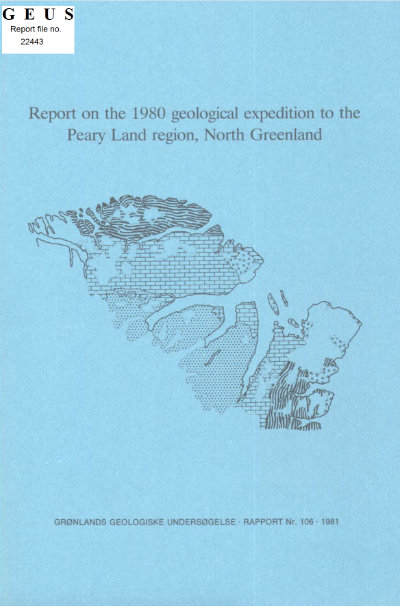Hydrocarbon source rock sampling in Peary Land 1980
DOI:
https://doi.org/10.34194/rapggu.v106.7773Abstract
The Peary Land region in North Greenland (fig. 31) contains a sequence of Lower Palaeozoic sediments which is probably more than 4 km thick (Dawes, 1976; Christie & Peel, 1977; Hurst, 1979; Christie & Ineson, 1979; Hurst & Surlyk, 1980; Ineson & Peel, 1980; Surlyk, Hurst & Bjerreskov, 1980). From Early Cambrian to Wenlock the area was divided into a northern turbidite trough and a southern, mainly carbonate platform (fig. 32). The platform seems to have undergone several phases of backstepping to the south, accompanied by expansion of the turbidite basin (fig. 32) (Surlyk et al., 1980). The region was affected by an orogeny of assumed Devonian - early Carboniferous age (Dawes, 1976). Deformation is most intense in northern Johannes V. Jensen Land (fig. 31), where an amphibolite facies is attained along the north eoast (Dawes & Soper, 1973) and decreases southwards, leaving the platform earbonates virtually undeformed. A separate, strongly block-faulted sedimentary basin, the Wandel Sea Basin is present in eastern Peary Land and farther to the south-east (Dawes & Soper, 1973; Håkansson, 1979). It eontains a sequenee of Upper Palaeozoie carbonates and Upper Palaeozoic - Mesozoic mainly coarse clastics more than 3 km thick.
Downloads
Published
Issue
Section
License
This article is distributed under a CC-BY 4.0 licence, permitting free redistribution and reproduction for any purpose, even commercial, provided proper citation of the original work. Author(s) retain copyright over the article contents.


